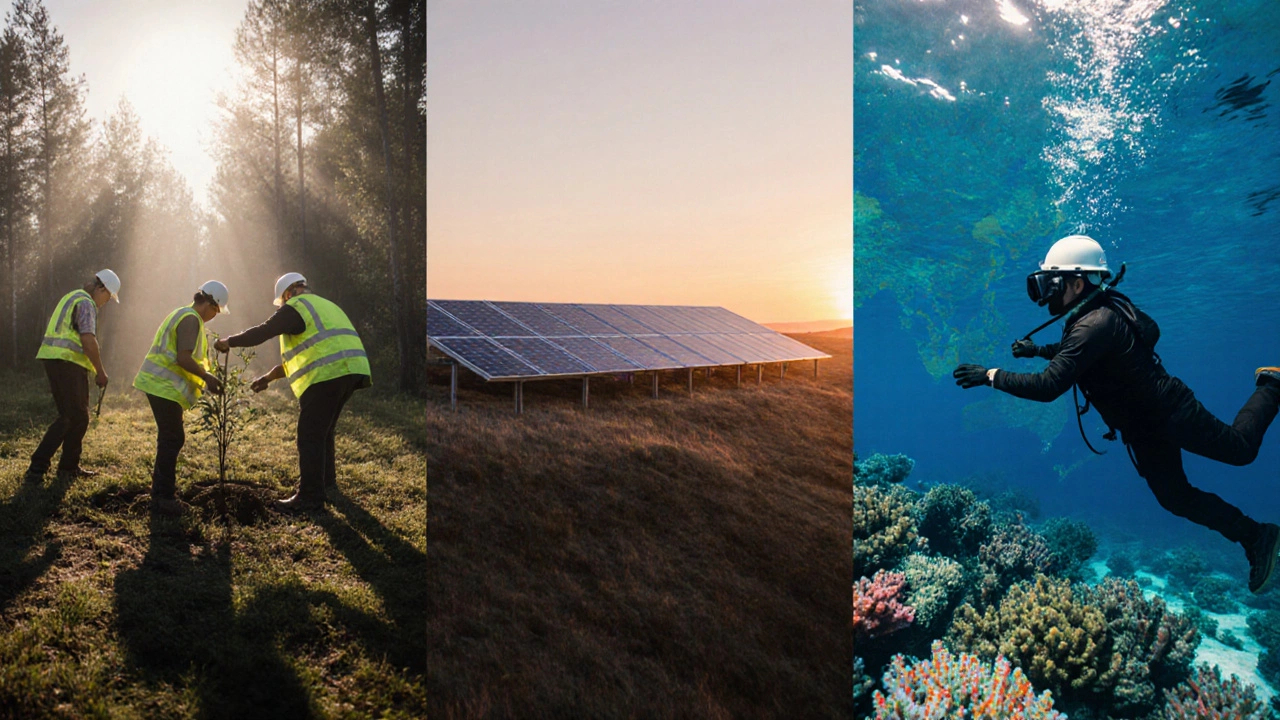When you think about making a real impact on climate change, protecting wildlife, or restoring forests, the first question is often “best environmental charity?” It’s tempting to pick the first name you see on a Google search, but the reality is that each organization has a different focus, scale, and way of measuring success. This guide walks you through how to evaluate green nonprofits and presents a shortlist of the most effective ones to consider this year.
Why choosing the right environmental charity matters
Donating to a cause you care about feels good, but the payoff varies wildly. Some charities pour most of their funds into outreach, while others invest heavily in on‑the‑ground projects that can be quantified in acres of forest saved or species rescued. Knowing where your money goes helps you align your values with measurable outcomes, and it also protects you from charities that spend a large slice on admin costs.
Our evaluation framework - the six criteria that matter
- Mission clarity: Does the organization have a single, well‑defined goal?
- Financial transparency: What percentage of donations reaches program work?
- Impact metrics: Are results reported in concrete numbers (e.g., hectares restored, emissions reduced)?
- Scalability: Can the charity expand its projects without a proportional cost jump?
- Geographic focus: Is the work happening where it matters most to you?
- Credibility: Does the group have third‑party ratings from GiveWell, Charity Navigator, or similar agencies?
We scored each candidate on a 0‑10 scale for every criterion, then averaged the scores for an overall rating.
Top picks for 2025
Below are the charities that topped our rubric. Each one excels in at least four of the six criteria and has a proven track record of delivering tangible results.
| Charity | Primary focus | Program‑to‑donation ratio | Key impact metric (2024) |
|---|---|---|---|
| World Wildlife Fund (WWF) | Wildlife conservation & habitat protection | 78 % | 1.9 million ha of forest protected |
| The Nature Conservancy | Land acquisition & climate‑resilient ecosystems | 82 % | 850 km² of coral reef restored |
| Conservation International | Community‑led biodiversity projects | 75 % | 3.2 million ha of forest under community stewardship |
| Sierra Club Foundation | Policy advocacy & clean‑energy campaigns | 70 % | 45 MW of renewable capacity funded |
| Greenpeace | Direct action & environmental campaigning | 65 % | 12 major policy shifts influenced |
| Rainforest Alliance | Sustainable agriculture & forest certification | 80 % | 1.3 million ha of certified forest |
In‑depth look at each organization
World Wildlife Fund (WWF) began in 1961 and now works in more than 100 countries. Its biggest win this year was a partnership with the government of Brazil to halt deforestation in the Amazon, directly saving 1.9 million hectares. WWF channels 78 % of donations to hands‑on projects, and its annual report includes a detailed break‑down of spending by region.
The Nature Conservancy focuses on buying critical lands before they’re developed. In 2024, it finalized a $300 million purchase of a coastal mangrove system in Vietnam, protecting 850 km² of habitat that buffers storm surges and stores carbon. Their program‑to‑donation ratio of 82 % ranks among the highest in the sector.
Conservation International works closely with Indigenous communities. Their “Forest Guardians” program hands over land rights to locals, resulting in 3.2 million hectares of forest managed sustainably. The organization’s transparent ledger shows exactly where each dollar goes, making it easy for donors to track impact.
Sierra Club Foundation concentrates on policy and clean‑energy advocacy. In the past year, it helped fund the construction of 45 MW of solar capacity in the Midwest, a move that offsets roughly 75,000 tonnes of CO₂ annually. While its program‑to‑donation ratio sits at 70 %, the long‑term policy wins often translate into massive emissions reductions.
Greenpeace is known for high‑visibility actions-from ship‑board protests to legal battles. Its 2024 campaign forced a major oil company to abandon a planned Arctic drilling site, a win counted among 12 policy shifts worldwide. Though its overhead is higher (65 % program ratio), the media impact it generates can catalyze broader change.
Rainforest Alliance certifies farms and forests that meet strict sustainability standards. The 2024 report shows 1.3 million hectares of forest now carry the Rainforest Alliance seal, meaning better biodiversity protection and improved livelihoods for local workers. Their efficient use of funds (80 % toward programs) makes them a solid pick for donors who prefer measurable outcomes.
How to donate effectively - tips that stretch every dollar
- Opt for recurring gifts. Many charities reduce admin costs for steady donors, which can raise the program‑to‑donation ratio by up to 5 %.
- Check if the nonprofit accepts matched‑gift contributions from your employer. This can double-or even triple-your impact.
- Look for tax‑effective giving options, such as donor‑advised funds, especially if you’re in a high‑income bracket.
- Consider volunteering time as well as money. Hands‑on experience often gives you insight into how projects are run and can inform future giving decisions.
Common pitfalls and how to avoid them
Not every charity that claims to be “green” lives up to the hype. Here are red flags to watch for:
- Vague impact statements-if a report only says “we’re making a difference” without numbers, dig deeper.
- Overly high admin expenses (>30 %). While some overhead is normal, excessive spending can signal inefficiency.
- Lack of third‑party audits-independent verification is a strong indicator of credibility.
- Frequent changes in leadership-stability often correlates with consistent mission execution.
When you spot any of these, pause and research alternative organizations that meet the six‑criterion framework.
Next steps - put your generosity to work
Now that you have a shortlist, pick the cause that resonates most with you-whether it’s forest preservation, clean energy policy, or Indigenous stewardship. Visit the charity’s official website, read the latest annual report, and follow the donation instructions. Remember, even a modest monthly gift can add up to significant change over a few years.
How do I know if an environmental charity is trustworthy?
Look for third‑party ratings (GiveWell, Charity Navigator), read audited financial statements, and check that impact metrics are specific and recent. Transparent charities publish detailed program‑to‑donation ratios and list concrete outcomes like acres protected or emissions cut.

Can I donate in ways other than money?
Absolutely. Many groups need volunteers for fieldwork, advocacy, or fundraising events. Some also accept in‑kind donations such as equipment, data services, or professional expertise.
What’s the difference between a charity and a non‑profit?
All charities are non‑profits, but not every non‑profit qualifies as a charity. To be a charity, the organization must have a public benefit purpose and be registered for tax‑deductible contributions in its jurisdiction.
How much should I give to make a real impact?
Impact isn’t just about the amount; it’s about consistency. A $25 monthly pledge to a high‑efficiency charity can fund a full‑time forest ranger after a few years, while a one‑off $500 gift might cover a short‑term project.
Are tax deductions available for donations to environmental charities?
In most countries, donations to registered charities are tax‑deductible. Check your local tax authority or a financial advisor to confirm eligibility and required documentation.






